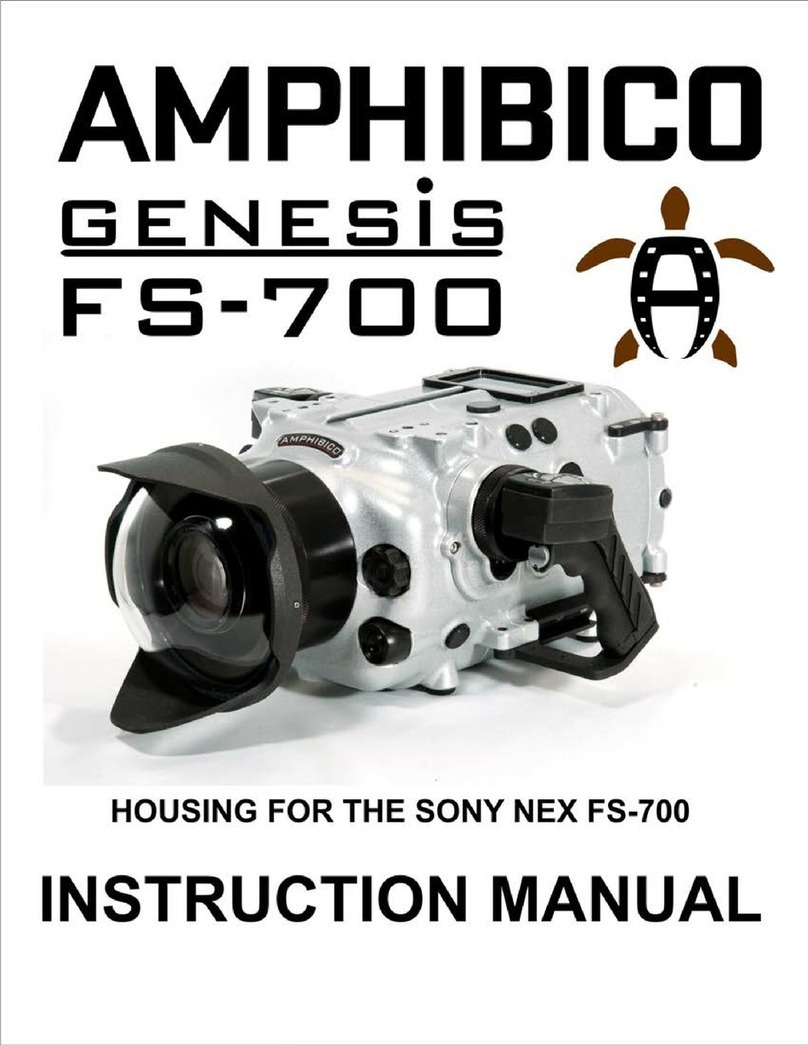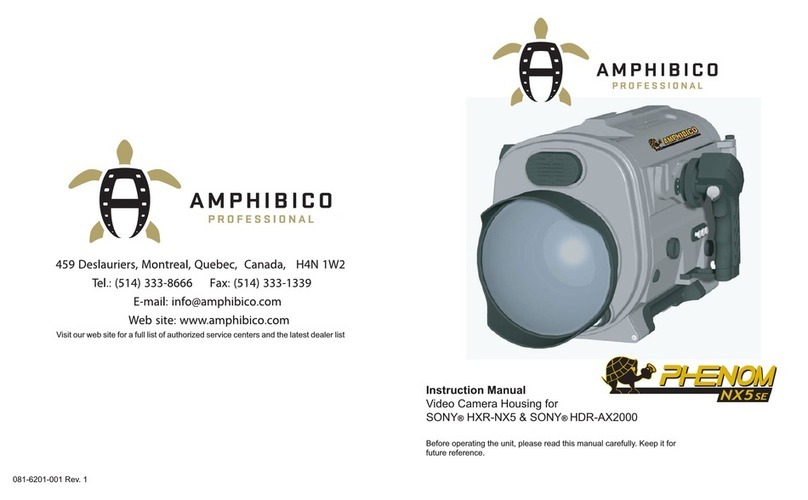2
TABLE OF CONTENTS
Unpacking Your Housing....................................................................................3
Housing Features and Controls......................................................................4-5
Preparing the Camera & Housing.................................................................6-10
Opening the housing..............................................................................6
Removing the saddle.............................................................................6
Setting the camcorder............................................................................6
Setting the saddle..................................................................................7
Installing the saddle...............................................................................7
Connecting the saddle...........................................................................7
Placing the camcorder...........................................................................8
Closing the housing...............................................................................8
Adjusting the IRIS and MENU knobs.....................................................9
Viewfinder eyepiece adjustment............................................................9
Replacing the bayonet lens....................................................................9
Installing accessories...........................................................................10
Water Entry...........................................................................................10
Housing Camera & Operations...................................................................11-15
Power ON/OFF.....................................................................................11
Power save..........................................................................................11
Mode settings.......................................................................................11
Zooming...............................................................................................12
Focusing...............................................................................................12
White balance......................................................................................13
Light buttons.........................................................................................13
Effects...................................................................................................14
Review..................................................................................................14
Index marker.........................................................................................14
Back light..............................................................................................14
Display..................................................................................................14
Menu....................................................................................................15
Iris adjustment knob.............................................................................15
ND filter knob........................................................................................15
Gain......................................................................................................15
Shutter..................................................................................................15
Maintenance.......................................................................................................16
Servicing O-rings..................................................................................16
Specifications....................................................................................................17
Optional Accessories........................................................................................18
General Shooting Tips......................................................................................19
Warranty.............................................................................................................20




































